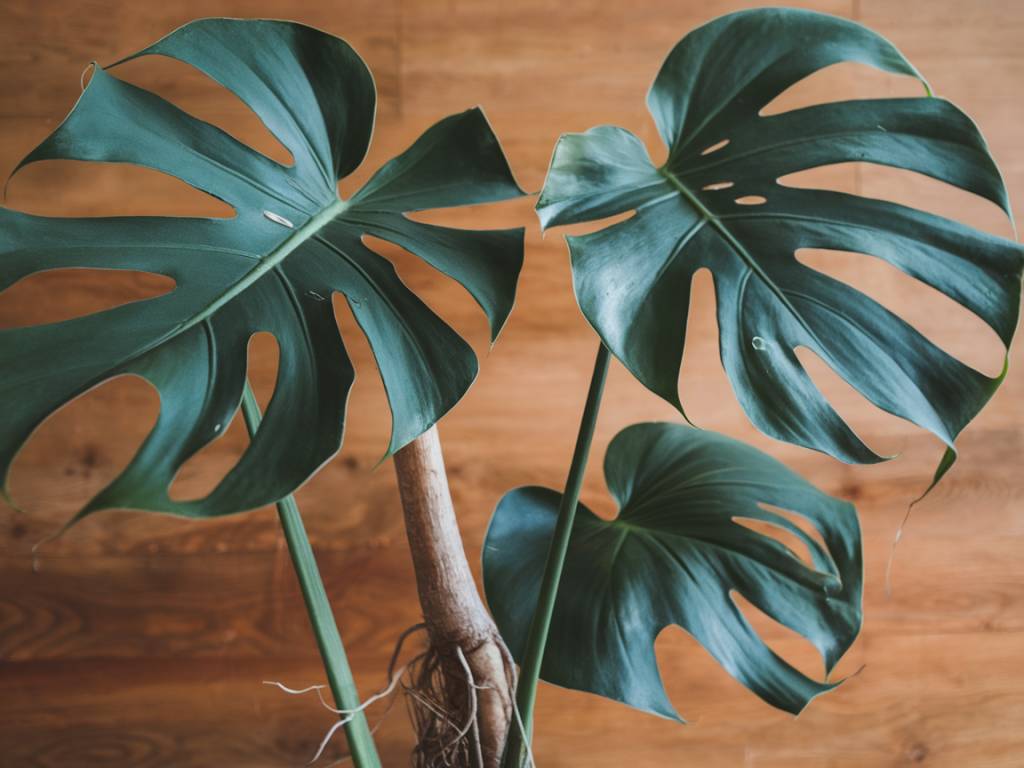There’s something incredibly satisfying about seeing your Monstera Deliciosa flourish with large, lush leaves. I’ve spent countless hours experimenting and learning how to get the best out of these beautiful houseplants. Here, I want to share my experiences and tips that have helped my Monstera Deliciosa grow bigger, healthier leaves.
The Importance of Proper Lighting
One of the most critical factors for the health of your Monstera Deliciosa is ensuring it gets the right amount of light. These plants naturally thrive in the dappled sunlight of tropical rainforests, so replicating that environment is key.
Bright, Indirect Light: Place your Monstera in a location where it can receive bright, indirect light. Direct sunlight can scorch the leaves, while too little light can stunt growth. A spot near a north or east-facing window usually works well.
Rotate Your Plant: Rotate your Monstera periodically to ensure all sides get equal exposure to light. This helps the plant grow evenly and prevents lopsided growth.
Watering Wisely
Watering can be tricky, as it’s easy to either overwater or underwater your Monstera Deliciosa. Finding the right balance is crucial for the plant’s overall health and leaf size.
Check the Soil: Always check the top inch of soil before watering. If it feels dry, it’s time to water. If it’s still moist, wait a few days and check again.
Water Thoroughly: When watering, ensure that you do so thoroughly until water comes out of the drainage holes. This helps wash away any excess salts that could be harmful to the plant.
Avoid Standing Water: Make sure your plant is not sitting in standing water. Empty the saucer beneath the pot after watering to prevent root rot.
Humidifying Your Plant’s Environment
Monstera Deliciosa loves a humid environment, just like in its natural habitat. Enhancing the humidity around your plant can encourage it to produce lush, large leaves.
Use a Humidifier: Placing a humidifier near your Monstera can significantly boost humidity levels. Aim for a humidity level between 60-70%.
Mist Your Plant: Regularly misting your Monstera’s leaves can also help, though this is less effective than a humidifier.
Group Plants Together: Grouping your Monstera with other houseplants can create a more humid microenvironment. Plants naturally release moisture into the air, benefiting each other.
Feeding Your Monstera
Fertilizing can give your Monstera the nutrients it needs to grow strong and produce large leaves. However, you must be cautious not to over-fertilize.
Choose the Right Fertilizer: Use a balanced, water-soluble fertilizer diluted to half strength. An organic fertilizer is preferable as it enhances soil health and structure.
Frequency: Fertilize your Monstera every two to four weeks during the growing season (spring and summer). Reduce or stop fertilizing in the fall and winter when the plant’s growth naturally slows down.
Repotting and Soil
Ensuring your Monstera has enough space to grow is essential for its health. If the plant becomes root-bound, it may stop growing new leaves altogether.
When to Repot: Typically, you should repot your Monstera every two years. If you see roots growing out of the drainage holes or circling the bottom of the pot, it’s time for a bigger home.
Soil Choice: Use a well-aerated and well-draining soil mix. A mixture of peat moss, perlite, and pine bark is a good option. This type of soil retains moisture without becoming waterlogged.
Pruning and Supporting Growth
Pruning your Monstera can encourage it to produce larger leaves and can also help you maintain a desirable shape.
Trim Dead or Damaged Leaves: Regularly remove any yellowing or brown leaves. This allows the plant to focus its energy on healthy growth.
Prune for Shape: If your Monstera is becoming too leggy or sprawling in unwanted directions, prune back the growth tips. This encourages bushier growth.
Support Your Plant: As your Monstera grows, it may need support to keep its large leaves and long vines upright. Use a moss pole or a sturdy trellis to guide its growth.
Dealing with Pests
Even with the best care, pests can sometimes find their way onto your Monstera. Regular checks and early intervention can prevent them from becoming a larger problem.
Inspect Regularly: Check the undersides of leaves and along stems for any signs of pests like spider mites, mealybugs, or scale.
Natural Remedies: If pests are found, use natural remedies like neem oil or a mixture of water and mild soap. Always test a small area first to ensure your plant doesn’t react negatively.
Quarantine New Plants: Whenever you bring a new plant into your home, quarantine it for a few weeks before placing it near your Monstera. This helps prevent any new pests from spreading.
Understanding Your Plant
Every Monstera Deliciosa is unique, and understanding your specific plant’s needs is perhaps the most important aspect of care.
Observe and Adapt: Regularly observe your Monstera and adapt your care routine based on its responses. If the leaves are drooping, it might need more water. If they’re yellowing, it could be a sign of overwatering or nutrient deficiency.
Patience is Key: Growing a healthy Monstera takes time. Be patient and consistent with your care, and your plant will reward you with big, beautiful leaves.
Remember, the journey of caring for a Monstera Deliciosa is as rewarding as the end result. Happy gardening!
Samanta
